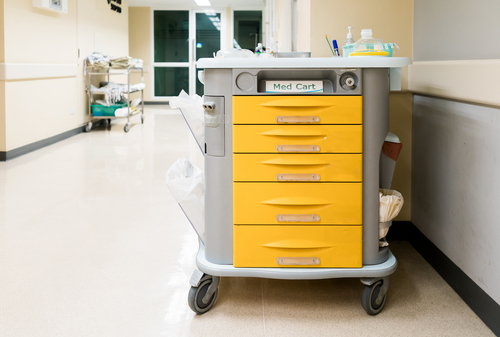Growing requirements for easy and fast access to electronic medical records for the use of point of care services is one of the primary drivers that are encouraging the adoption of medical carts across the globe. Moreover, preference for higher efficiency of medical procedures is expected to drive the future designs of modern medical carts, and increase overall demand in the years ahead.
Manufacturers Choose Lightweight Materials for High Volume Production
With the aim of reducing production costs, and increasing the productivity of manufacturing facilities, materials including injection molding, aluminum extrusions, castings, and stampings. Manufacturers have to take into account the speed of production and cost of raw materials, limitations of design, tooling complexities, and secondary processes, and ability of customization.
Other options such as sheet metal and thermoform also find demand owing to constant research and development activities by manufacturers and ideal characteristics of these materials in the development of prototypes, and in some cases even for large-scale production processes.
International Regulations Govern the Development of Customized Medical Carts
As per a recent study by Future Market Insights on the global medical carts market, manufacturers of customized medical carts have to first make sure that the design complies with the technical standards prescribed by the International Electrotechnical Commission.
As a result, manufacturers are required to invest money in the services of an independent or hired specialist who is well versed with the IEC 60601-1 rules, and who has access to an IEC certified testing lab. Owing to the possibility of extended testing procedures, risk management files, and detailed documentation, medical cart manufacturers often have to pay additional expenses that are anticipated to restrict the activity of medical cart manufacturers in the future.
Higher Cleanability Gains Priority among Medical Cart Designers
Modern designs of medical carts include features such as rounded corners, overhangs, while eliminating most seams and joints to greatly minimize the risk of microbial growth. Moreover, manufacturers use specialized materials and paints that help in maintaining overall sterility of the products, while resisting wear through the use of possibly damaging materials such as bleach or rough wipes, thereby enhancing product durability. Manufacturers incorporate these features to not just maintain sterility, but also to improve the aesthetics of the medical carts being produced.
Final Thoughts: Cybersecurity Finds Application in Medical Cart Production
With high demand for instant access to medical records of patients, manufacturers are increasingly integrating computers to their cart structures with wireless capabilities, which are anticipated to witness high demand owing to increasing modernization of healthcare facilities around the globe. On the other hand, this feature also puts medical carts at the risk of attacks by cybercriminals. The repercussions of such a risk can range from glitches and inoperability of the equipment, to loss and illegal access to patient data. As a result, medical cart manufacturers also need to now include professionals with relevant experience of cybersecurity in their teams.

